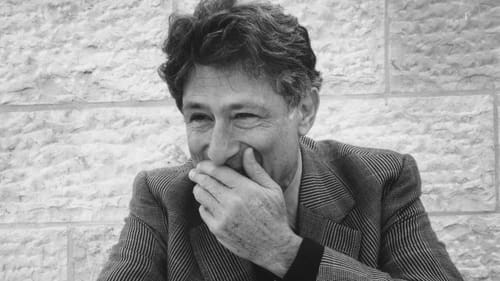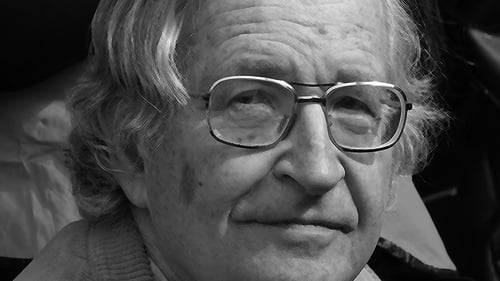Koshiro Otsu
Historia
Koshiro Otsu (大津 幸四郎 Otsu Koshiro, 1934 - 28 November 2014) was a Japanese cinematographer and film director. Otsu is one of the most famous cinematographers in Japanese film history. He joined Iwanami Productions in 1958. After going freelance, he worked with legendary director Ogawa Shinsuke on The Oppressed Students (1967) and Summer in Narita (1968), with Tsuchimoto Noriaki on Prehistory of the Partisans (1969), Minamata: The Victims and Their World (1971), and many other films.

Director of Photography
The Wages of Resistance is a feature-length documentary film that portrays an "extended span of time" of the protests against building Narita International Airport which have continued from the 1960's to today through documenting monologues of those whose lives were twisted by the movement.

Director
The Wages of Resistance is a feature-length documentary film that portrays an "extended span of time" of the protests against building Narita International Airport which have continued from the 1960's to today through documenting monologues of those whose lives were twisted by the movement.

Camera Technician
With the passing of Nakazawa Keiji in December 2012, Barefoot Gen’s Hiroshima now stands as the manga artist’s last message of peace to the world. Mr. Nakazawa recounts his life, from the aftermath of the atomic bombing up until the days he created his acclaimed manga series Barefoot Gen (Hadashi no Gen), by exploring sites of painful memories in Hiroshima. Through Mr. Nakazawa’s story, and his original art work, Barefoot Gen’s Hiroshima illuminates the nature of war and nuclear weapons, urging us not to repeat the past.

Cinematography
Before World War II, Ikego village was an idyllic agriculture community. The Imperial Navy took over the village and the hills to build the largest ammunition preserve in Asia. When Japan lost, these facilities were taken over by the US Navy, and are now housing for the American soldiers.

Director of Photography
Documentary filmmaker Makoto Sato offers this reflection on the life and career of Edward Said, the deeply influential literary and cultural critic, Columbia University academic, and outspoken advocate for displaced Palestinians, of whom he was one. Exploring the landscapes of Said's childhood and how they influenced his philosophy, this film features rare footage of Said and interviews with many of his colleagues, including Noam Chomsky.

Cinematography
Living in a slum damaged by the atomic bomb and watching elderly first-generation zainichi hibakusha (atomic bomb survivors) pass away one after another, Pak felt compelled to break their silence with this documentary, her first. Using up all her savings and going into debt, she teamed up with cinematographer Otsu Koshiro and collected these testimonials from zainichi North and South Koreans living in Hiroshima and South Korean hibakusha visiting Japan for medical treatment.

Director of Photography
In 2005, sixty years after the end of World War II, the conservative Japanese government is pressing ahead with plans to revise the nation's constitution and jettison its no-war clause, Article 9. This documentary places the ongoing debate over the constitution in an international context:

Director
This documentary follows one of the creators of the japanese dance Butoh, Kazuo Ohno, with 95 at the time (now he's with 101) and his son, Yoshito Ohno.

Director of Photography
This documentary compiles a series of Noam Chomsky's interviews and lectures that address the events of 9/11.

Director of Photography
An unusual family portrait questioning the definitions of art, family, and what it means to be disabled. Imamura Hanako is a 22-year-old girl with severe autism. Once a week she attends a painting class, where she paints pictures in oils. Every evening after dinner, she creates what her mother Chisa has named “food art.” This may only involve arranging the leftovers from the day’s meal on the floor or a tray, but Chisa records the works every day, accumulating some thousands of photographs. The collection of photographs has now been exhibited around the country. Following Hanako’s daily life in the routine of the four members of the Imamura family, we watch as a portrait of a “very ordinary” family unfold.

Director of Photography
A documentary portrait of Miho Shimao, widow of renowned Japanese writer Toshio Shimao.

Camera Operator
This is a film about seven artists. It's also a film about seven people who are mentally handicapped. In the course of this touching film, we discover how art may provide a route to the human interior.

Cinematography
This odd three-parter purports to map the metaphysics of the interpersonal universe, dividing its trio of tales into three, different-toned “planets.”

Director of Photography
This film is a record of the first Yamagata International Documentary Film Festival. It reflects the various ways the festival was given shape by nascent global changes embodied by Perestroika, the Tiananmen Square massacre, and many other contemporaneous events.

Cinematography
Starring Kazuo Ohno, an inspirational figure in Butoh dance.

Director of Photography

Director of Photography
38 years after the Pacific War, 84 victims of a mass suicide ordered by the Japanese military were uncovered in a cave in Yomitan village. This film contains the testimonies of some of the survivors, the story of a sculptor leading bereaved family members in creating a statue of peace, and the resistance of a group of girls against the raising of the Japanese flag at the high school graduation ceremony.

Director of Photography
Japanese drama film.

Director of Photography
1980 Japanese film distributed by Shochiku.

Director of Photography
Film distributed by ATG.

Cinematography
My Town, My Youth is an inspiring film shot twenty years after the official recognition of the disease and focuses on a group of young people (many born with the disease) as they mobilise to keep their cause visible by organising a concert by the popular enka singer Ishikawa Sayuri.

Director of Photography
An update to the story of Minamata disease, going up to 1976

Director of Photography
Fujishita Kumi is an ordinary office lady. Longing to escape her poor fishing village for a life in the city, she came to Tokyo. One day while alone in the office, she's spotted rolling up her pantyhose by the window cleaner Kurata Katsuo. This was to be their first encounter. Completely enchanted by Kumi, Katsuo does everything he can to get close to her. Katsuo is a man with a terrible past. With the death of his coal miner father, his family was broken up and he was forced to follow in his father's footsteps laboring away in the mud. In spite of this, Katsuo still has dreams. He dreams of living in Resiporuko, a utopian fantasyland that exists only in his imagination. When Katsuo and Kumi finally meet they find themselves unable to communicate. Katsuo spends all his time talking about Resiporuko with a starry look in his eyes, while Kumi dreams of living the high life in the city. One day when the two travel to the seashore, they discover a wounded seagull.

Cinematography
A medical perspective of Minamata disease in three parts - 1) Progress of Research; 2) Pathology and Symptoms; 3) Clinical Field Trials

Director of Photography
The sea around Minamata was heavily polluted with mercury during the 1950s and 1960s from the Chisso Corporation's chemical factory. This highly toxic chemical bioaccumulated in shellfish and fish in the Yatsushiro Sea which, when eaten by the local populace, gave rise to Minamata disease. The disease was responsible for the deaths and disabling of thousands of residents, all around the Yatsushiro Sea. The marine ecosystem was also extensively damaged.

Cinematography
Second film in Tsuchimoto's series on Minamata disease - the victims of Minamata disease negotiate directly with Chisso Corporation (responsible for dumping toxic water into Minamata Bay) for life-long medical care and compensation.

Director of Photography
The first in a series of independent documentaries that Tsuchimoto made of the mercury poisoning incident in Minamata, Japan.

Cinematography
This film documents student preparations for the final phases of the 1969 protests against the renewal of the security treaty.

Director of Photography
In 1968, Ogawa decided to form Ogawa Productions and locate it at the newly announced construction site of Narita International Airport in a district called Sanrizuka. Ogawa chose to locate his company in the most radical of the villages, Heta. Some farmers immediately sold their land; others vehemently protested and drew the support of social movements across the country. Together they clashed with riot police sent in to protect surveyors, who were plotting out the airport. Summer in Sanrizuka is a messy film – its chaos communicating the passions and actions on the ground.

Cinematography
A film made with a group of student and worker activists during the Haneda 1967 protests against Japan’s cooperation with the US and the Vietnam war. The film subverts the conventions of mainstream television news coverage to investigate in great detail the killing of a young protester during clashes with the riot police and thus denounces the increasing use of repressive violence by the government.

Director of Photography
A galvanising documentary about the organised resistance of a group of students barricaded at the Takasaki City University of Economics. The university student struggles at the end of the 1960s in Japan were the culmination of over a decade of protests, social dissent and political unrest. All this gave energy to the student movement, which displayed original and sustained forms of organisation and resistance against the government and which would spread to universities all over the country. Together with the filmmakers of the recently formed collective Jieiso, Ogawa Shinsuke joined a group of students barricading themselves inside the Takasaki City University of Economics. Shot over the course of a year, this film documents the nature of the political discussion and organisation as well as the fierce debates going on among the students and their violent struggles with the authorities. Credit: ICA London




